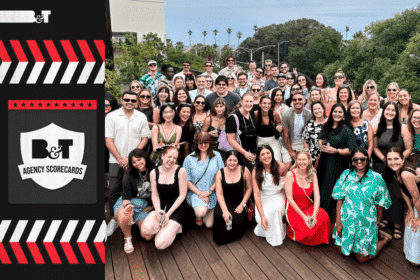In a five and a half minute long TikTok rant this week, Australian media personality, television host, former radio presenter and podcaster Abbie Chatfield lashed out at the GfK ratings system, referencing what she calls the “bullshit” system as the reason that Kyle & Jackie O aren’t rating in the Melbourne market.
In the video, Chatfield disputes Kyle Sandilands’ claim that Melbourne listeners are “clutching their pearls” and instead argues that the rating system is “fundamentally flawed”. “The rating system for radio is bullshit. It is lies. It cannot be accurate”.
@abbiechatfield TLDR: radio ratings dont matter at all because there is no way for them to be accurate. A PAPER RANDOMISED SURVEY?? SORRY?????? #kyleandjackieoshow #radio ♬ original sound – Abbie Chatfield
Chatfield argued that the “outdated” system inflated radio’s actual audience numbers, keeping the industry afloat through inflated ratings. She even questioned why advertisers would spend millions based on what she claimed was an unreliable and antiquated system.
Not 100% willing to take a disgruntled former radio host’s word for it, B&T went straight to the source, sitting down for a chat with John Musgrove, head of research at Commercial Radio Australia (CRA) to unpack the validity behind Chatfield’s claims. Musgrove told B&T that these assertions simply aren’t factual, making clear that the only thing that is outdated is Chatfield’s claims themselves.
B&T: John, is the radio ratings system “bullshit and lies”?
Musgrove: Obviously not, a quick Google reveals some of the claims on TikTok are wrong, but it is an important question and it gives me the chance to explain just how big a change Radio360 as a measurement system is.
This is a world-leading rating technology that moves well beyond the paper diary that TikTok was very focused on and brings the industry into the digital era. Today, we have a hybrid system that combines surveys (80% digital, btw) with the hard streaming numbers and the GfK MediaWatch (wearable listening meter), basically smart watches that check what people are listening to. It’s also a validation to us that CRA and GfK are being invited to present Radio360 to global media and research conferences given its innovative hybrid approach.
B&T: Can you explain the methodology behind the current radio rating system, we know it’s more than just a paper survey.
Musgrove: GfK does have a rigorous ratings system in place. It draws on data collected from 50,000 respondents annually across the five capital cities and over 60,000 (read: a lot of people) when including the main regional markets.
New respondents are included in the surveys every week ensuring a constant refreshing of the data included. The sample used is also controlled both by region, age, and gender, ensuring it represents the population that it is reporting on.
Plus its surveys, digital numbers AND the GfK MediaWatch. It’s a really thorough measurement system well ahead of other radio markets in the world.
B&T: How do you measure and ensure the accuracy of the system?
Musgrove: GfK is monitored by an external independent auditor throughout the survey year and has Key Performance Indicators that must be met, these are reviewed by the auditor and CRA.
In addition, each sample is audited to ensure that GfK is delivering as per specifications and that all quality control measures are met. Each sample is also audited to ensure it is robust and reflects the population in which it is providing ratings for as you would expect for an industry which contributes $1 billion to GDP and supports 6,600 full- time equivalent jobs.
B&T: How do you assess the impact of marketing campaigns on radio ratings? Are there specific metrics you use to measure this influence?
Musgrove: There are no specific measures to measure impact of marketing campaigns or one off events that can occur during a survey period, this is the case for any media measurement system. We minimise the impact of a single marketing event by using long periods of time “in survey” and averaging weeks to reduce the impact.
For example, if a survey ran for four weeks, the stations could heavily influence the audience by running marketing and promotions for that period – this is why this practice stopped decades ago in Australia. The GfK Radio360 system is in survey for 41 weeks of the year and employs a rolling survey methodology where 6 to 10 weeks of data is rolled at any one time (6 weeks for Survey 1, 8 weeks for Survey 2 and 10 weeks for the rest of the surveys) this smooths out any impact that one off marketing and promotional events may have.
B&T: Do you ever have people put in nil listening for radio consumption?
Musgrove: All the time – we are not measuring the radio listening population, we measure the whole population. We do not include or exclude anyone based on their listening behaviour and regularly capture people who report not listening. This illustrates the rigour and breadth of the system.
What measures are in place to ensure that these samples accurately represent the broader listening audience?
The GfK Radio360 service is designed to measure radio listening for the population and, as a result, the ‘broader listening audience’. In order to do this, the sample must be a reflection of the population; region, age and demographic targets are based on the ABS census for our survey areas. We do not exclude or include respondents from the sample based on their listening behaviour.
B&T: How do you assess the impact of marketing campaigns on radio ratings? Are there specific metrics you use to measure this influence?
Musgrove: There are no specific measures to measure impact of marketing campaigns or one off events that can occur during a survey period, this is the case for any media measurement system.
We minimise the impact of a single marketing event by using long periods of time “in survey” and averaging weeks to reduce the impact. For example if a survey ran for four weeks, the stations could heavily influence the audience by running marketing and promotions for that period – this is why this practice stopped decades ago in Australia. The GfK Radio360 system is in survey for 41 weeks of the year and employs a rolling survey methodology where 6 to 10 weeks of data is rolled at any one time (6 weeks for S1, 8 weeks for S2 and 10 weeks for the rest of the surveys) this smooths out any impact that one off marketing and promotional events may have.








